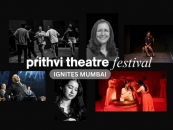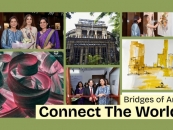-853X543.jpg)
THE MADRAS MUSIC FESTIVAL: BREAKING OUT OF THE VIRTUAL
by Sharada Ramanathan January 5 2024, 12:00 am Estimated Reading Time: 3 mins, 51 secsMuch has been discoursed about this Margazhi festival, from its sustenance over a century, to its inadequacies in inclusivity and outreach, writes filmmaker and writer Sharada Ramanathan.
Every year, in December, the world marvels at the phenomenon that is the Madras Music season called the Margazhi Utsavam or the December festival. Hundreds of organizations called sabhas (literally translating to assembly) host day-long concerts of vocal and instrumental artists of Carnatic Music.
But the most stunning aspect of this marathon festival is that it has not merely sustained but flourished through radical changes that have challenged its very existence time and again. And its sustenance is not dependent on any unhealthy corporate nexus and domination, but on membership, ticket sales, and a wide array of sponsorships.
We live in an era where the virtual world has not just pervaded, but redefined entertainment. And the COVID spell has kept people indoors more than ever, making it a lifestyle transformation.
Facebook and Instagram reels, social media interactive platforms, a wide range of OTT offerings and twitter trends and politics have shifted and shaped scale and audience sensibilities. From the 30-second reels to coke-studio ensembles, there is a superfluous but high production value, thanks to technology, demanding short attention spans. OTTs offer a bouquet of niche films and series that can be watched at leisure. And cinema halls now see only films of gigantic scale or top billing actors.
In the midst of this unimaginable magnitude of virtual entertainment, the December music season stands as a baffling phenomenon that defies all analysis of how entertainment is received.
45 days – from December 01 to January 15 of every year, the same audience that has seemingly become habituated to the very seductive range of virtual entertainment, leaves the comfort of direct-home-viewing and treks to a sabha, to soak in half-day of Carnatic music that comes with minimum titillation and maximum intellect and aesthetic. Listening to just one singer at a time, for at least 2 hours, who is accompanied by anything between 2-5 supporting instrumental artists, of a music that is deep, intense and complex, becomes an everyday thing for all the 45 days. There is an audience for every performance of the thousands of performances in the hundreds of sabhas, from early afternoon till nightfall. It seems almost surreal that an audience is making a choice, day after day, for a month-and-a-half, between an array of online entertainment on his/her big screen TV, and a Carnatic music concert with a singular depth of listening.
9.jpg)
And then, there is an international audience that descends on Chennai exclusively to attend this festival. They throng to listen to a Sanjay Subrahmanyan, a Vijay Siva, or a relatively junior Amrutha Venkatesh belting out an elaborate raga for close to 45 minutes where about 2000 people are listening with rapt attention. And each of the audience is receiving this music on his/her own terms without the manipulation of any middleman. And this is happening three times a day for 45 days, simultaneously, in over 200 sabhas.
Outside the concert hall, the festival extends to the canteens serving traditional south Indian cuisine. And the animated post-concert discussions over tiffin and filter coffee creates a community interaction that is otherwise shrinking in urban lifestyle.
Carnatic music is arguably cultivated taste. Like its northern counterpart, Hindustani music, it involves an understanding of the melodic permutations and rhythmic patterns that are specific to its system. Yet, it has sustained a momentum of both artists and rasikas (connoisseurs) across age, class and now, even caste and religion.
What makes this festival tick? Is it that the unbroken tradition of the December festival has sustained and enhanced an audience for it? Could it be that a festival, by definition, permeates the environment and draws a community to partake? Could it also be that live events are shrinking, particularly in big metros, and the human psyche yearns for it? Also, perhaps, virtual entertainment is often snapshots and mostly ensemble-based, while the Carnatic concert is the exposition of individual capacity for evolved musical possibilities?
Perhaps it is a combination of all these factors that evokes a collective positive engagement and makes for the festive vibration of the music season.
The Margazhi festival makes me wonder if the revitalization of more community arts festivals and endeavours even at the village level will be one way of bringing human beings out of their virtual worlds, which can often get locked into toxic boxes, and reboot live inter-human communication. This could well serve to diminish the power of the virtual world in manipulating and defining individual and community response to itself and the world around it.




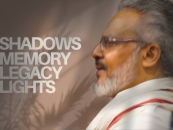
-173X130.jpg)
-173X130.jpg)
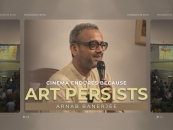
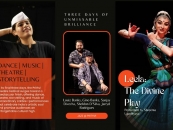
-173X130.jpg)
